I get asked many questions about oil so I thought a thread here for all oil related questions would be a good idea and build into a FAQ or reference point for others.
So, put your oil questions here but please give the following information if you would like a recommendation:
* Make
* Model
* Year
* Engine size/type
* Any mods
* Type of use (road/track)
* Additional info (max oil temps, current oil used)
* What do you want a recommendation for? Engine, Gearbox etc?
Standard K Series
Good thread idea, i wanted to ask if the oil i'm using is ok for the use of my car. Here goes,
* Lotus Elise S1
* 1998
* K series 1.8 16v
* Only mods to engine are Hurricaine air filter and Raceline Back box.
* Mocal water/oil heat exchanger fitted+ remote stat to cooling system.
* Mainly road use car with minimum of 1 trackday a month, usually covering between 140-180 miles on a t/day.
Stack temp reading stays between 79-83 on road, no higher than 85 on track (even after 20 mins of hard use.)
Gear box oil i'm using at the minute if Castrol TAF-x
Engine oil used is Vavoline VR1 racing 5w-50 fully synthetic.
Should i change from the Gear box/ engine oil i'm using at the minute?
Answer One
Well, the K series was designed to run on sae 40 which is in has a viscosity of 14cst at 100degC oil temp (bulk in the sump).
An sae 50 will have a viscosity of 18cst at 100degC which is in fact quite a bit thicker than needed at 100degC.
On the basis that your oil temps are lower than 100degC the oil will always be thicker than the design parameters at high revs/high temps due to the cooler which as its drawbacks.
With oil that is this cool you could easily get away with a 5w-30 or 5w-40 without problems and not have the potential downsides which are
Lower BHP at the wheels Poorer fuel consumption More oil drag, friction, heat and wear
If you wish to change I would suggest a decent 5w-30 or 5w-40 synthetic (5w-40 would be my preference)
The next question is which oil would I recommend.
If trackdays are a factor then a race oil that can be used on the road with no downsides.
Silkolene Pro S 5w-40 or Motul 300V 5w-40 would be my choice.
The "Stack" Rus mentions is the standard Elise instrument cluster and he's reporting water temp, not oil. However with a water/oil cooler, instead of oil reaching up to 130ºC on track, it is perhaps being pegged to around 100ºC?
Thanks for that, I thought it was oil temp that was being referred to.
The 5w-40's I mention are good for 120degC (bulk oil temp in sump)
Duratec Conversion
I'd be interested in hearing your suggestions for my car:-
* '98 S1 Elise
* Cosworth 240bhp Ford 2.3L Duratec I4
* PG1 Gearbox
* Mainly road use.
* Mocal oil/water cooler.
* Wet Sump
* 85deg C coolant temp (unknown oil)
* 5W-40 Mobil 1 and Castrol SMX-S currently in use in engine/gearbox respectively.
Answer Two
Your choice of oils is fine, 5w-40 is ideal. Others to look at would be Motul and Silkolene.
For the gearbox the Castrol is fine, another to look at would be the Amsoil MTF.
Oil Temp Gauges
I've looked in various archives and the oil temp that others with oil temp gauges seem to be getting is around 120 degrees, i'd imagine mine would be somewhere in that region as well, for the time being i dont have an oil temp gauge fitted but hopefully will have at some point so i'll be able to see what temps the oil is getting to.
Iirc Dobbo has just fitted an oil temp gauge to his car so he might have some figures that would be useful for this thread.
Answer three
QUOTE
(Rus)
Iirc Dobbo has just fitted an oil temp gauge to his car so he might have some figures that would be useful for this thread.
Tis true. Unfortunately, the only decent run it's had so far is the Mids run a couple of weeks ago, so I don't have much to go on so far. It never went above 80s IIRC on that run. I do know that the oil cooler comes on line at about the same time that the coolant on the Stack reaches 50-60deg (from the touch-of-the-hand-ometer. The oil was probably around 50deg when the cooler started coming on line - I have a fairly good idea of what 50deg to the touch feels like as that's the upper limit we can work at in my job. You don't flinch instantly, but can touch it for a few seconds before pulling your hand away, and that's what the cooler pipes were like). After 1/2 hour of idling, however, the pipes were too hot to touch, so probably much the same as the coolant temperature.
Also, however, when I tightened up the connector to the temp sensor there was a slight "cracking" noise, which I assume was the sensor insert breaking its seal with the housing. That means it'll now have a slower response (no chance of an oil leak, though). Eliseparts have said that they will send me a new one when I do my next oil change. I also read recently that putting a sensor in the sump plug is not ideal as it's not really measuring the bulk temperature of the sump oil, and is slow to respond due to it's location (bit of a dead zone, so temperatures only change slowly). I did question this design with Eliseparts but there was no alternative within the design and timeframe that I had to get the car back on the road.
To be honest, if you're measuring oil temperature, there are two measurements that are important :
1 - the supply temperature (to check that you're not supplying oil that's too hot to the bearing) and
2 - the bulk temperature in the sump (to see if it gets overheated during use).
However, without two sensors and gauges, that's not possible !
Perhaps another set of gauges - I can then run two temp gauges, a pressure gauge and a voltmeter so that I can tell when my new audio amp, speakers and sub are drawing too much power ... biggrin.gif
The perfomance and limits of most oils are based on bulk oil temp in the sump.
As a rule of thumb the Silkolene Chemist (the man that invented Pro S and all their race oils) told me that -
Pro S 5w-40 was good to 120degC measured in the sump, after that to use Pro S 10w-50 as this is good for 140degC plus.
Mind you at these temps I'd be worried about something else giving out first, not the oil!
Oil Labelling Explained
What's written on your oil bottle and what does it mean.
This post may seem like going back to basics but I am constantly surprised by the amount of people who do not know or understand what is written on a bottle of oil and therefore no idea of what they are buying/using.
To be blunt about the subject, if a bottle of oil does not contain the following basic information then DO NOT buy it look for something that does!
1) The purpose for which it is intended (i.e. Motor oil, Gear oil etc)
2) The viscosity (i.e. 10w-40, 5w-30 etc for Motor oils and 80w-90, 75w-90 etc for Gear oils)
3) The specifications that it meets (should contain both API and ACEA ratings)
4) The OEM Approvals that it carries and the codes (i.e. MB229.3, VW503.00, BMW LL01 etc)
Ignore the marketing blurb on the label it is in many cases meaningless and I will explain later what statements you should treat this with some scepticism
So, what does the above information mean and why is it important?
THE BASICS
All oils are intended for an application and in general are not interchangeable. You would not for example put an Automatic Transmission Oil or a Gear Oil in your engine! It is important to know what the oils intended purpose is.
VISCOSITY
Most oils on the shelves today are "Multigrades", which simply means that the oil falls into 2 viscosity grades (i.e. 10w-40 etc)
Multigrades were first developed some 50 years ago to avoid the old routine of using a thinner oil in winter and a thicker oil in summer.
In a 10w-40 for example the 10w bit (W = winter, not weight or watt or anything else for that matter) simply means that the oil must have a certain maximum viscosity/flow at low temperature. The lower the "W" number the better the oils cold temperature/cold start performance.
The 40 in a 10w-40 simply means that the oil must fall within certain viscosity limits at 100 degC. This is a fixed limit and all oils that end in 40 must achieve these limits. Once again the lower the number the thinner the oil, a 30 oil is thinner than a 40 oil at 100 degC etc. Your handbook will specify whether a 30, 40 or 50 etc is required.
SPECIFICATIONS
Specifications are important as these indicate the performance of the oil and whether they have met or passed the latest tests or whether the formulation is effectively obsolete or out of date. There are two specifications that you should look for on any oil bottle and these are API (American Petroleum Institute) and ACEA (Association des Constructeurs Europeens d'Automobiles) all good oils should contain both of these and an understanding of what they mean is important.
API
This is the more basic as it is split (for passenger cars) into two catagories. S = Petrol and C = Diesel, most oils carry both petrol (S) and diesel © specifications.
The following table shows how up to date the specifications the oil are:
PETROL
SG - Introduced 1989 has much more active dispersant to combat black sludge.
SH - Introduced 1993 has same engine tests as SG, but includes phosphorus limit 0.12%, together with control of foam, volatility and shear stability.
SJ - Introduced 1996 has the same engine tests as SG/SH, but phosphorus limit 0.10% together with variation on volatility limits
SL - Introduced 2001, all new engine tests reflective of modern engine designs meeting current emissions standards
SM - Introduced November 2004, improved oxidation resistance, deposit protection and wear protection, also better low temperature performance over the life of the oil compared to previous categories.
Note:
All specifications prior to SL are now obsolete and although suitable for some older vehicles are more than 10 years old and do not provide the same level of performance or protection as the more up to date SL and SM specifications.
DIESEL
CD - Introduced 1955, international standard for turbo diesel engine oils for many years, uses single cylinder test engine only
CE - Introduced 1984, improved control of oil consumption, oil thickening, piston deposits and wear, uses additional multi cylinder test engines
CF4 - Introduced 1990, further improvements in control of oil consumption and piston deposits, uses low emission test engine
CF - Introduced 1994, modernised version of CD, reverts to single cylinder low emission test engine. Intended for certain indirect injection engines
CF2 - Introduced 1994, defines effective control of cylinder deposits and ring face scuffing, intended for 2 stroke diesel engines
CG4 - Introduced 1994, development of CF4 giving improved control of piston deposits, wear, oxidation stability and soot entrainment. Uses low sulphur diesel fuel in engine tests
CH4 - Introduced 1998, development of CG4, giving further improvements in control of soot related wear and piston deposits, uses more comprehensive engine test program to include low and high sulphur fuels
CI4 Introduced 2002, developed to meet 2004 emission standards, may be used where EGR ( exhaust gas recirculation ) systems are fitted and with fuel containing up to 0.5 % sulphur. May be used where API CD, CE, CF4, CG4 and CH4 oils are specified.
Note:
All specifications prior to CH4 are now obsolete and although suitable for some older vehicles are more than 10 years old and do not provide the same level of performance or protection as the more up to date CH4 & CI4 specifications.
If you want a better more up to date oil specification then look for SL, SM, CH4, CI4
ACEA
This is the European equivalent of API (US) and is more specific in what the performance of the oil actually is. A = Petrol, B = Diesel and C = Catalyst compatible or low SAPS (Sulphated Ash, Phosphorus and Sulphur).
Unlike API the ACEA specs are split into performance/application catagories as follows:
A1 Fuel economy petrol A2 Standard performance level (now obsolete) A3 High performance and/or extended drain A4 Reserved for future use in certain direct injection engines A5 Combines A1 fuel economy with A3 performance
B1 Fuel economy diesel B2 Standard performance level (now obsolete) B3 High performance and/or extended drain B4 For direct injection car diesel engines B5 Combines B1 fuel economy with B3/B4 performance
C1-04 Petrol and Light duty Diesel engines, based on A5/B5-04 low SAPS, two way catalyst compatible. C2-04 Petrol and light duty Diesel engines, based on A5/B5-04 mid SAPS, two way catalyst compatible. C3-04 Petrol and light duty Diesel engines, based on A5/B5-04 mid SAPS, two way catalyst compatible, Higher performance levels due to higher HTHS.
Note: SAPS = Sulphated Ash, Phosphorous and Sulphur.
Put simply, A3/B3, A5/B5 and C3 oils are the better quality, stay in grade performance oils.
APPROVALS
Many oils mention various OEM's on the bottle, the most common in the UK being VW, MB or BMW but do not be misled into thinking that you are buying a top oil because of this.
Oil Companies send their oils to OEM's for approval however some older specs are easily achieved and can be done so with the cheapest of mineral oils. Newer specifications are always more up to date and better quality/performance than the older ones.
Some of the older OEM specifications are listed here and depending on the performance level of your car are best ignored if you are looking for a quality high performance oil:
VW – 500.00, 501.00 and 505.00
Later specs like 503, 504, 506 and 507 are better performing more up to date oils
MB – 229.1
Later specs like 229.3 and 229.5 are better performing more up to date oils.
BMW – LL98
Later specs like LL01 and LL04 are better performing more up to date oils.
FINALLY
Above is the most accurate guidance I can give without going into too much depth however there is one final piece of advice regarding the labelling.
Certain statements are made that are meaningless and just marketing blurb, here are a few to avoid!
Recommended for use where…………… May be used where the following specifications apply…………… Approved by………………………..(but with no qualification) Recommended/Approved by (some famous person, these endorsements are paid for) Racing/Track formula (but with no supporting evidence)
Also be wary of statements like "synthetic blend" if you are looking for a fully synthetic oil as this will merely be a semi-synthetic.
Like everything in life, you get what you pay for and the cheaper the oil the cheaper the ingredients and lower the performance levels.
If you want further advice then please feel free to ask here or contact us through our website at www.opieoils.co.uk.







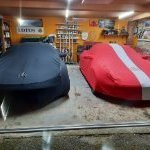


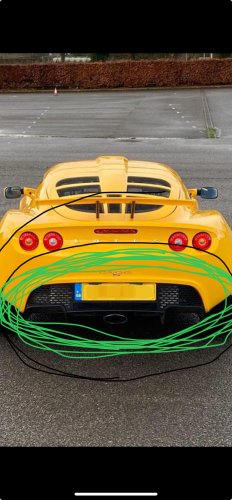
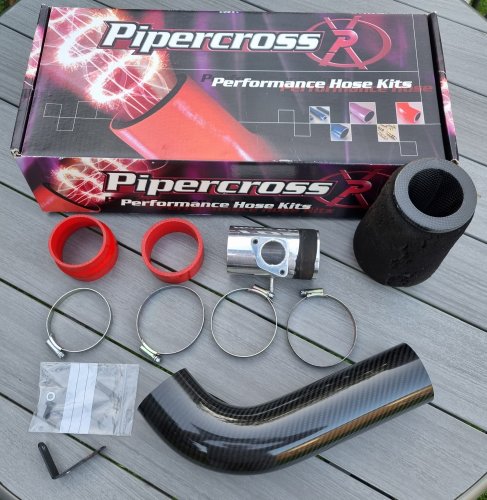

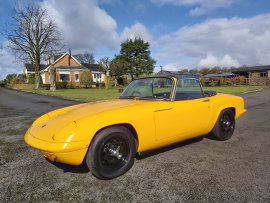
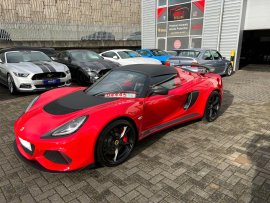

Recommended Comments
There are no comments to display.
Join the conversation
You can post now and register later. If you have an account, sign in now to post with your account.